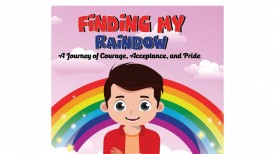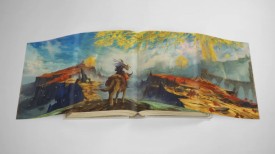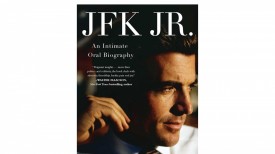18 Years Later: Unveiling Harsh Truths About The Bridgerton Books

Discover the dark side of Julia Quinn's Bridgerton series 18 years after its conclusion as recent scrutiny exposes sexism and troubling behaviors within the beloved Regency-era novels.(Photo : Amazon/Julia Quinn)
Julia Quinn's beloved "Bridgerton" book series wrapped up 18 years ago. Set in Regency-era England, the books delve into the lives and romances of an aristocratic family. While they have enchanted readers globally, recent scrutiny has revealed some harsh truths about the series.
Romanticization of Questionable Behavior
The books are known for their romantic plots and happy endings. However, some questionable behaviors were unquestionably romanticized. Certain relationships in the books involve elements of coercion or lack of consent, which can be problematic when presented in a romantic light.
Reflecting the norms of their time, the book often mistakes submission for love, especially from the male characters' perspectives. In "The Viscount Who Loved Me," Anthony's sudden and domineering pursuit of Kate is impossible to ignore.
Similarly, the three eldest Bridgerton brothers frequently use fear as a tactic in their romantic pursuits. Colin frightens Penelope over publishing the last Whistledown paper before an intense make-out session. Benedict's supposed flirty banter with Sophie, involving a naked chase, feels uncomfortable. These narratives rely on the outdated trope of experienced men and submissive women, a common theme in early 2000s romance literature.
Another questionable case is Daphne's sexual assault against Simon. A significant issue in their marriage is Simon's reluctance to have children due to his traumatic childhood. The book portrays Daphne's handling of this revelation more problematically than the TV show. Daphne guilt-trips Simon for not wanting children, shames him for his feelings toward his late father, and punishes him by moving out of their bedroom.
When Simon gets drunk, Daphne takes advantage of him despite knowing he has not changed his mind about children. After Simon leaves following Daphne's actions, she is depicted as justified, while Simon is unfairly portrayed as neglectful and cruel.
A reader questioned the romantic relationships in the novel, highlighting that it is unacceptable for one partner to disregard the other's wishes and impregnate herself against their will. This behavior is not romantic and undermines the story. The book fails as a romance novel as the protagonist constantly undermines her partner's wishes, making it hard to support the relationship.
READ ALSO: Discover the Rokesby Series: A Captivating Bridgerton Prequel
Problematic Power Dynamics
Characters from lower social standings are often introduced, focusing on the Bridgertons marrying into equal or higher-status families for social appearances.
For example, in "An Offer from a Gentleman," Benedict falls for Sophie Beckett, an illegitimate daughter of an Earl who becomes a servant due to her evil stepmother. The class divide is portrayed as exciting and rebellious for Benedict rather than addressing the real social inequalities. Similarly, Anthony's title as Viscount creates conflict in romantic pursuits, highlighting the importance of social status in the series.
Eloise Bridgerton is initially portrayed with a modern mindset, different from those around her, but ultimately succumbs to societal expectations. Saddened by Penelope and Colin's engagement and feeling lonely, she reaches out to Sir Philip, whom she initially rejected. Eloise disappointingly marries the problematic Philip, who is condescending and abusive.
"Bridgerton" attempts to critique women's societies' treatment of women, forgetting that Jane Austen already satirized society's shallowness. The series is filled with deliberate anachronisms, which can work if done thoughtfully or if they are entertaining enough to overlook them. However, "Bridgerton" fails on both counts, lacking understanding, coherence, and enjoyment.
Misogyny and Objectification
Some critics pointed out blatant misogyny. In "The Duke and I," Simon exhibits several sexist moments, including asserting, 'I own you,' to Daphne. Similarly, Anthony in "The Viscount Who Loved Me" reveals his sexist attitude when he dismisses Kate's request to wait to consummate their marriage, stating, 'I don't like being denied my rights.' A feeble attempt at White feminism further compounds the pervasive sexism from the male characters throughout the books, limited to women making superficial comments about their intellect surpassing that of men.
The novels are rife with sexism and objectification, much of which emanates directly from the writing itself. Two sisters lament the societal view of women as mere decorative objects, likening them to 'human vases' to be ogled at. Yet, the narrative swiftly transitions to their older brother's attempt to break free from societal constraints, leading him to an artist's studio. There, he revels in a scene of casual orgy and naked models bathed in candlelight, seemingly celebrating liberation.
The inconsistency of the book series in portraying objectification highlights a problem with how Quinn handles sexism. Despite claims of historical accuracy, the pervasive misogyny undermines the novels. It is hard to feel good about romantic relationships when male characters degrade women.
RELATED ARTICLE: 5 Key Events Unfolding in Each Book of the Bridgerton Series
© 2023 Books & Review All rights reserved.
Popular Now
1
Books to Read After 'Fourth Wing': Top Picks for Fantasy and Romantasy Fans

2
‘The Secret Public’ by Jon Savage Book Review: An Insightful Look Into the LGBTQ Influence

3
Stephanie Regalado's 'If They Only Knew' Column Is Now A Book, Unleashing 60 Anonymous True Stories to Empower Women

4
'No Wire Hangers' Scene That Almost Did Not Happen: New Book Reveals Faye Dunaway's Struggles

5
Rare First Edition of Aphra Behn's Novel 'Oroonoko' Discovered in Kent: A Historic Literary Find

Latest Stories
Book Reviews
‘The Secret Public’ by Jon Savage Book Review: An Insightful Look Into the LGBTQ Influence

Book News
Stephanie Regalado's 'If They Only Knew' Column Is Now A Book, Unleashing 60 Anonymous True Stories to Empower Women

Book News
'No Wire Hangers' Scene That Almost Did Not Happen: New Book Reveals Faye Dunaway's Struggles

Book Reviews
‘The Perfect Couple’ by Elin Hilderbrand Book Review: A Captivating Summer Mystery

Book News
New Book ‘The Franchise’ Reveals Penguins President Kyle Dubas’ ‘Biggest Mistake’ as Maple Leafs GM











